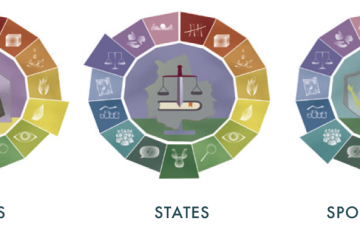Image: my laptop – I’ve been spending a lot of time here lately…
Over the past term, I have been joining educators around the country in getting to grips with new ways of teaching. I’ve been learning the skills of video-editing and web design, finding out about theories of e-learning, and getting closely acquainted with Zoom; the new language of ‘synchronous’ and ‘asynchronous’ activities, Padlets and Panopto and YouTube Premieres – it’s all starting to trip off my tongue now with unexpected ease. The summer break affords a chance to think through some of these changes more deeply, and prepare more fully for the autumn. It’s clear that the effects of the ‘pivot’ into online education are going to be much more far-reaching, and much longer-lasting, than we anticipated in March.
One aspect that’s taken me by surprise has been the way these changes have intersected with issues of inclusion and community. Shifting to online-only (or online-first) education methods has brought both benefits and problems in both of these areas. On the one hand, the flexibility of online teaching – videos you can watch and re-watch from home at your own pace, automatic captioning to support comprehension, and so on – seems to support inclusion. On the other, the whole project relies on base level of internet connectivity, access to devices, and free time/space to engage, none of which can be taken for granted – and everyone who has taught in this way over the last few months will have a story about a nightmare Zoom or Teams session dogged by problems of this kind. The same is true for questions of community: many students have clearly found it very difficult to be physically separated from the university environment and their friendship groups, and yet it’s undeniable that online technologies have enabled some new forms of community that would be impossible in any other setting. As we head into the autumn and prepare to welcome new students into our university, we are going to need to think very hard about how we can build and sustain a culture of inclusion and community in these circumstances.
This all makes me wonder about which changes from this online ‘pivot’ will be temporary, and which will be more permanent – and what they might mean for us as Christians working within the academy. Technology is of itself neither intrinsically good nor intrinsically bad; like any human tool, it is what humans make of it that counts. What principles might we want to bear in mind as we adapt to new ways of teaching and building community? Here are a few I’ve been thinking about:
- Value transformation, not just information. Teaching should change the way we live, not just put ideas in our head; this is core part of how I understand my calling as a lecturer. When I’m teaching in person, I am consciously trying to communicate my love for the subject and my respect for the students I’m working with. I want my actions to flow from my view of intellectual activity as an act of interpersonal worship, directed towards God as the creator of everything we study; my hope is that students will be inspired by this example. When I’m preparing online materials, the physical disconnect makes it easier for me to forget this fundamental goal and focus on conveying information; it’s important for me to counteract that.
- Seek out opportunities to listen. A live teaching environment provides ample opportunities to listen to and engage with students on their own terms; this is a core element of transformative teaching, since it allows a dialogue to develop and shifts the focus away from teaching as ‘information transfer’. In an online environment we need to create these opportunities deliberately, since by default the onus is on students to reach out proactively if they have a question or comment; often those who would most benefit from being heard are those least confident to speak out in this way.
- Consider the impact of online presence. Being physically present in an academic community provides me with many opportunities to be a witness to the difference knowing Jesus makes in my life. (That doesn’t mean I always take these opportunities, but they are at least there!) The opt-in and selective nature of online community means that those kinds of opportunities only come by conscious effort. That’s a real challenge, I think, particularly when we are trying to work out the boundaries between the different areas of our lives (something many are grappling with as they work, rest and play from home!).
Those are some of my thoughts, but I’d like to hear yours! Let me know in the comments below.
- Childlike faith? - December 18, 2024
- God with us - December 19, 2023
- Art in times of crisis - October 3, 2022


